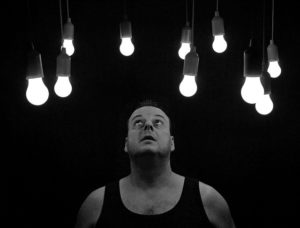 If you have look at the packaging of an LED light bulb from a reputable brand sold at any hardware store, you’ll find a small section that says “Lighting Facts.” Like the Nutritional Facts label on modern food products, which show fat, salt, protein, and calorie content among others, the Lighting Facts label helps you understand just what the light bulb is capable of, from its energy consumption and lifespan, to its color and brightness.
If you have look at the packaging of an LED light bulb from a reputable brand sold at any hardware store, you’ll find a small section that says “Lighting Facts.” Like the Nutritional Facts label on modern food products, which show fat, salt, protein, and calorie content among others, the Lighting Facts label helps you understand just what the light bulb is capable of, from its energy consumption and lifespan, to its color and brightness.
Although these labels may not make sense to the average consumer, they actually make it easier for you to make an informed decision when choosing which lights to install in your [city] home. Here’s what you need to know about the facts in any Lighting Facts label.
Estimated Yearly Energy Cost
This provides an estimate of how much it will cost to use the light bulb. The projection is based on a certain number of hours used per day and the cost per kWh of power.
It’s always a good thing to know how much it will cost to use a light bulb, especially when calculating its return on investment. If you’re switching to LEDs from incandescent bulbs, this information will help you calculate just how much you’ll be saving on your lighting expenses.
Light Appearance
Worried about ordering your light bulbs online and not seeing what they actually look like? Just look at the light bulb’s color temperature on the Lighting Facts, which will tell you how warm (yellow) or how cool (blue) the device’s light appearance is.
Lifespan
No more guessing when your bulb will need replacing. The Lighting Facts label will also have the bulb’s lifespan printed on the packaging. This figure is based on a certain number of hours the light bulb is used every day, which you can then compare with your actual usage at home to have a more realistic idea of how long it will last.
Brightness
Modern bulbs like LEDs measure brightness through lumens, not watts. Most consumers are often confused by this since we’re used to measuring a bulb’s brightness through wattage. As it turns out, we’ve been looking at the wrong unit of measurement all along.
Wattage is the amount of electrical power needed by the bulb to produce light while lumen levels measure the total quantity of visible light emitted by a source (i.e. the actual brightness of the bulb).
Energy Use
Finally, this tells you the bulb’s power consumption in watts. The fewer watts needed by a light bulb, the lower its power consumption will be. Bear in mind that this will not tell you how bright a light bulb is. For example, a 60-watt incandescent bulb can be replaced with a 12- or 15-watt LED bulb, which can sometimes generate even more light. Again, if you want to know how a bulb is, check its brightness or lumens rating on the Lighting Facts label
Lighting Facts labels help buyers base their decision on which bulb to buy on the lumens (brightness) of the bulb, as well as the cost of operation, instead of depending on wattage. It’s an industry tool that helps buyers evaluate the product’s performance against the manufacturer’s claims. With these facts, I’ll be easier for you to find the right bulb for your needs.

![4 Tips for Using LEDs in Aquariums [city]](https://eepros.com/wp-content/uploads/2017/05/aquarium-1373112_640-300x169.jpg)
![The 5 Cardinal Rules of Great Bathroom Lighting [city]](https://eepros.com/wp-content/uploads/2018/05/bathroom-1336167_1280-300x199.jpg)
![More Recognition For LED Lighting– Beyond The Nobel Prize [city]](https://8blocks.s3.amazonaws.com/eepros/blog-images/2015/01/nobel-300x295.png)
![4 Ways That LED Lights Are Revolutionizing Indoor Gardening [city]](https://8blocks.s3.amazonaws.com/eepros/blog-images/2016/08/pots-716579_640-300x176.jpg)